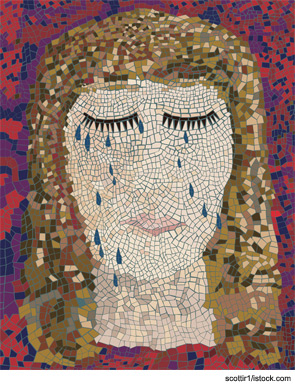
The words rheumatoid arthritis (RA) should put the same fear of God into people as the word cancer does, but they don’t. People wonder why someone who only has arthritis would subject themselves to possible side effects like “fatal infections,” “lymphoma,” “cancers,” “seizures,” “new or worsening heart failure,” and “multiple sclerosis” that come with the drugs that treat this disease. I used to think the same thing—now I know better. People hear “rheumatoid arthritis” and they think it’s like having the ache and stiffness you get when you’ve worked out too long doing something your body isn’t used to. This couldn’t be further from the truth.
My History of RA
I was diagnosed in April 2010, at 44 years old, with seropositive RA; the disease rapidly turned my life upside down. Although moderate at first, within the next two months it became severe and out of control.
I had worked for a decade as a logger and, following that, another eight years as a long-haul truck driver. Taking a job in dispatching, then accounting for a small trucking company in Reno, I finally had the time with my husband to enjoy our hobbies of rock collecting and fishing. We have a small orchard, a very large garden, and a flock of friendly chickens to care for. A few years into our new, quieter life, my disease hit. The RA was taking away everything I loved to do and making even the simplest tasks a trial of pain.
I had many flares before I started biologic therapy. I was diagnosed less than two months from the first bad flare in my shoulder, which occurred on March 1, 2010, the day after a long flight back from Australia. My primary care doctor was very concerned and thought it might be a blood clot. After testing came back normal, it was decided that I had bursitis. Although I’d had some migratory joint pain for a few months, I thought it was just a part of getting older and it wasn’t until I was gingerly planting some garden bulbs several days later that the knuckles of my right hand swelled up painfully and I realized something was very wrong. Off to the doctor again, more tests, and a referral to a rheumatologist, with whom I was very lucky to get an appointment within just two weeks. A couple of days after that I began to have very bad flares and started my first prednisone taper. Shortly thereafter I was diagnosed with RA and I started methotrexate the same day, April 19, 2010.
